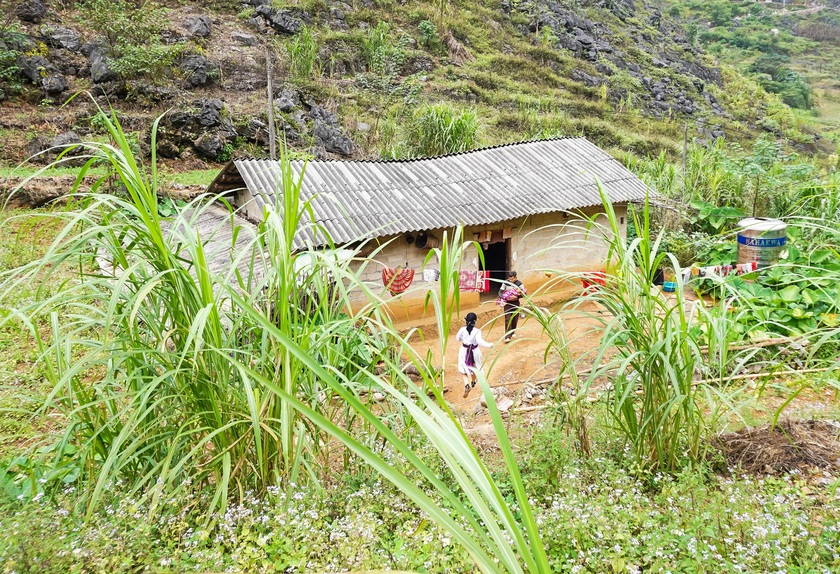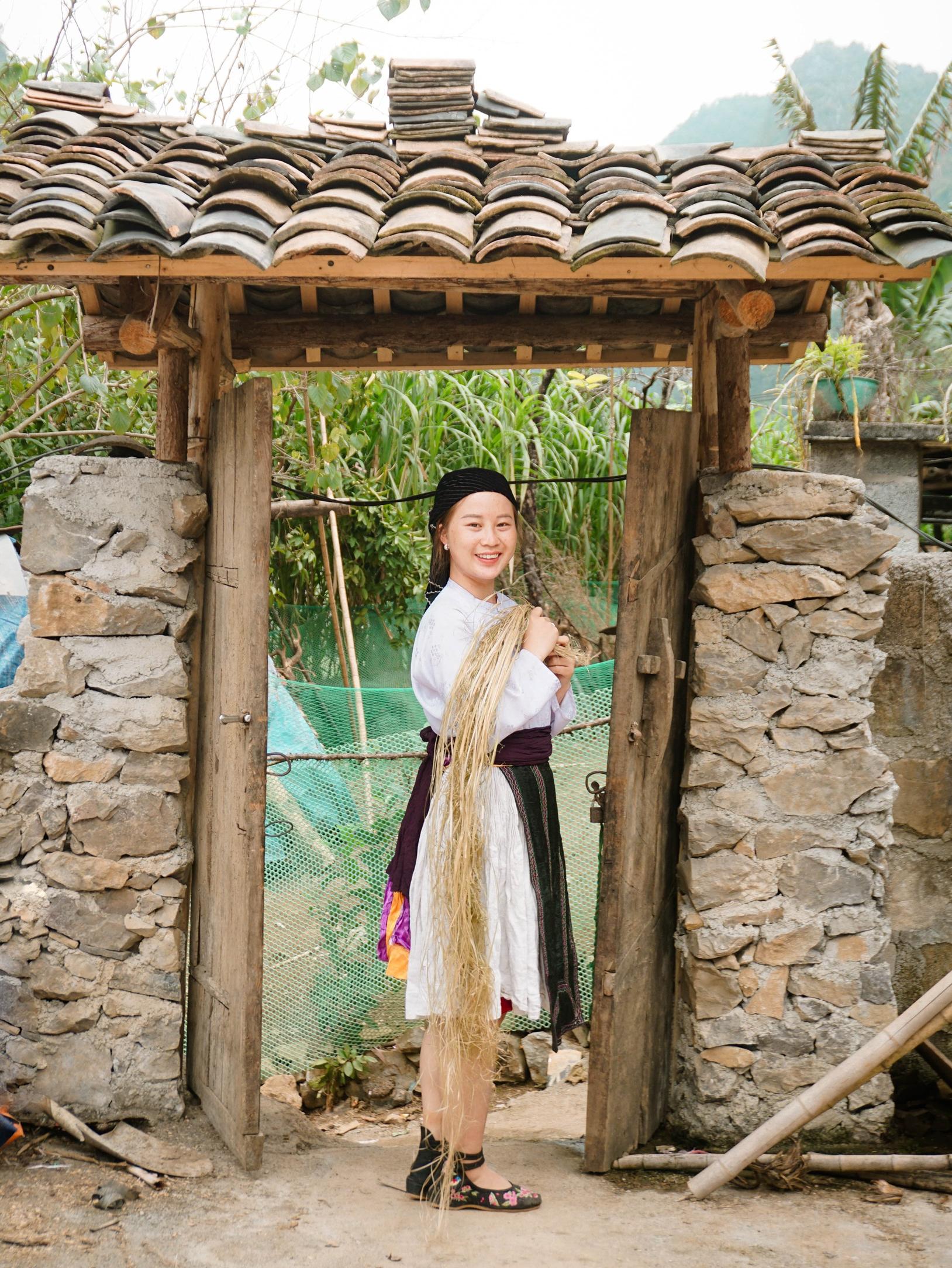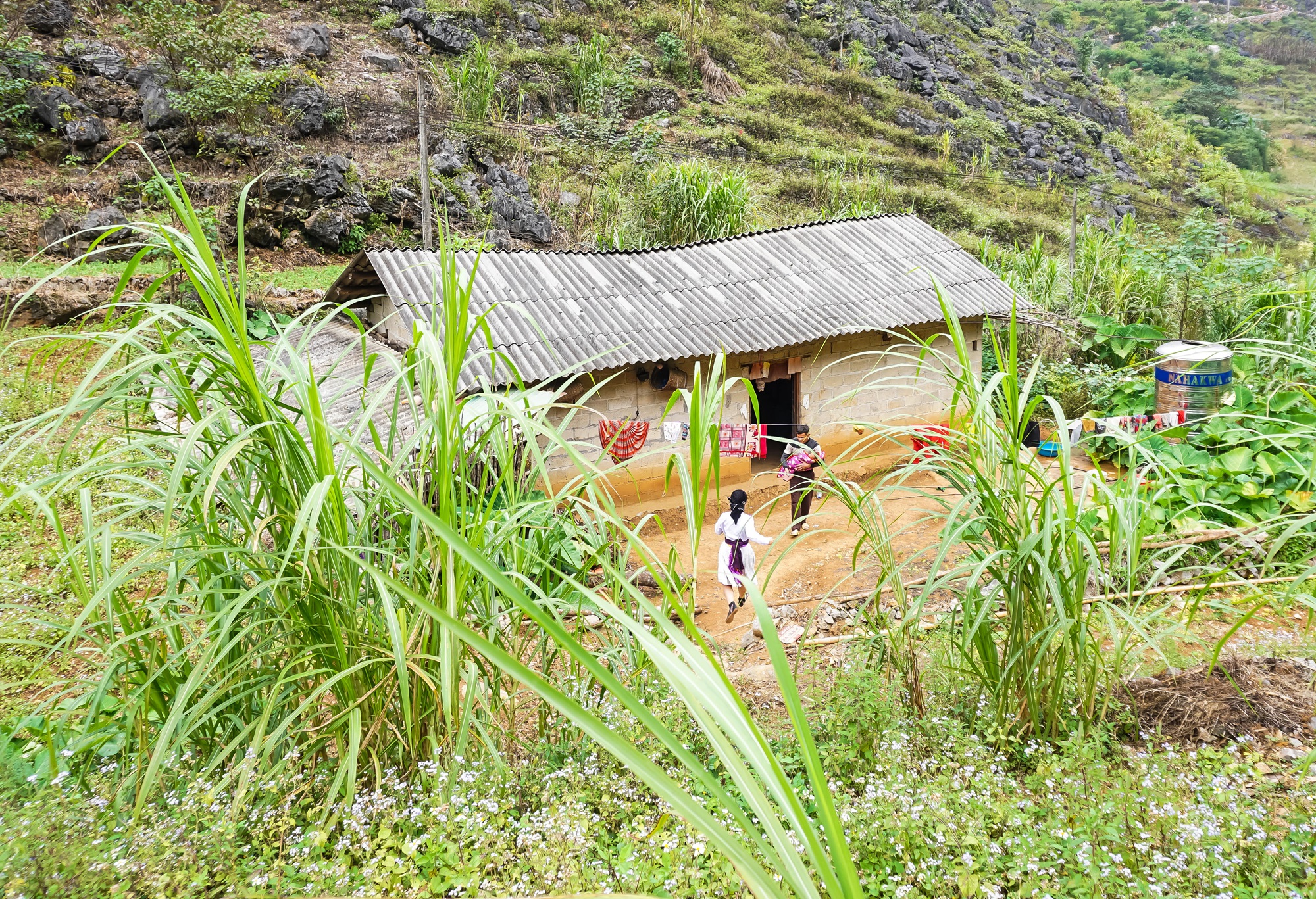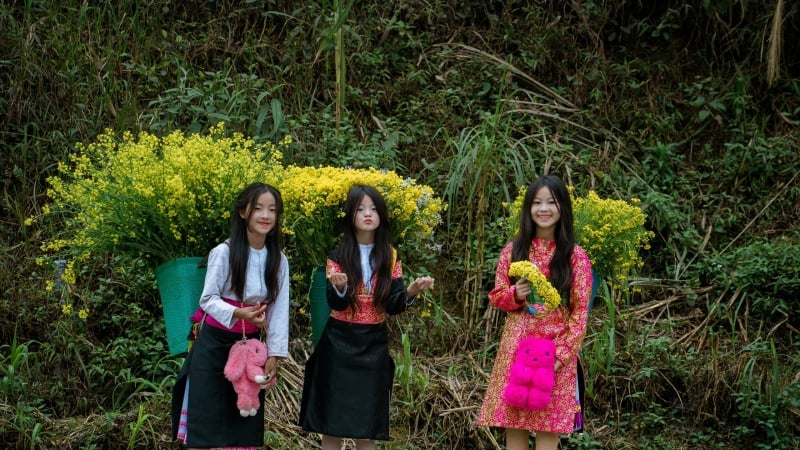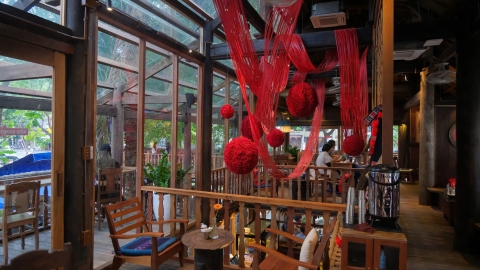Vang Thi De (born in 2002), from Thai Phin Tung commune, Dong Van district, Ha Giang province. De is one of the few young people of Gen Z Mong ethnic group who passed the university entrance exam from a remote mountainous province. Coming to Hanoi, in parallel with studying, De started a business with traditional raw linen products of the Mong people. After graduating from university, De returned to her homeland, continuing to fulfill her dream of bringing brocade linen to travel around the world, contributing to creating jobs for many women living in the border area.
From a small village, Nheo Lung village has now become a major supplier of brocade linen in Dong Van. This is also a cultural tourist destination to experience brocade linen weaving of the Mong people in Ha Giang.

Where woven linen fabrics are formed
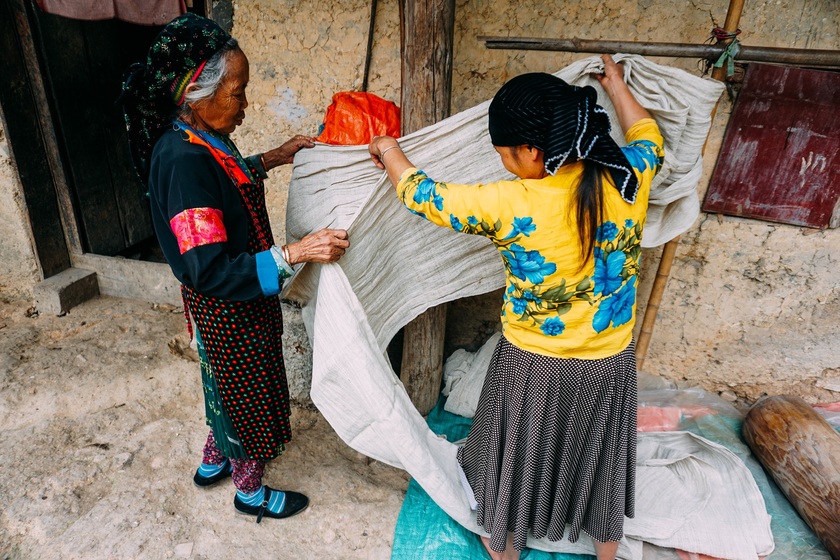
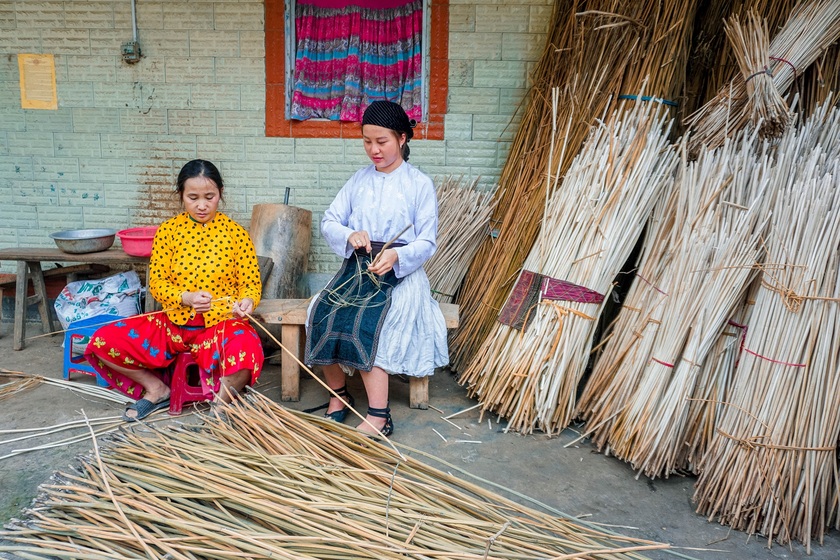
Dream of bringing brocade linen to travel around the world
As soon as the sun rose, I hurried from Dong Van ancient town to Thai Phin Tung commune to meet De. He was dressed in traditional Mong clothes and welcomed me at the gate of his house. De took me into the house and began to tell his story. “To make a piece of raw linen, the White Mong people have to go through many stages.”
In April or May, when the weather is nice, the Mong people will sow flax seeds on their family's best land. They usually sow flax seeds first before planting other crops because the flax roots will penetrate deep into the soil and improve the soil. About two and a half months later, the Mong people will harvest the flax. The large flax plants will be kept as seeds for the following year. The rest will be dried.

Mong Vang girl Thi De and the story of bringing linen to travel around the world

The larger flax plants will be kept for seed for next year. The rest will be dried.
A day before stripping the flax, the Mong people will take the flax plant to dry in the dew in places with lots of grass. A flax plant will be separated into five small strands, using the strength of 10 fingers. One hand presses down on the flax plant, the other hand uses the thumb and index finger to strip. Usually, a Mong person will strip three bundles a day. “For us Mong people, the flax plant is the thread that connects this world and the other world. Mong people do not strip flax at night because that is when our ancestors will come to visit us,” said De.
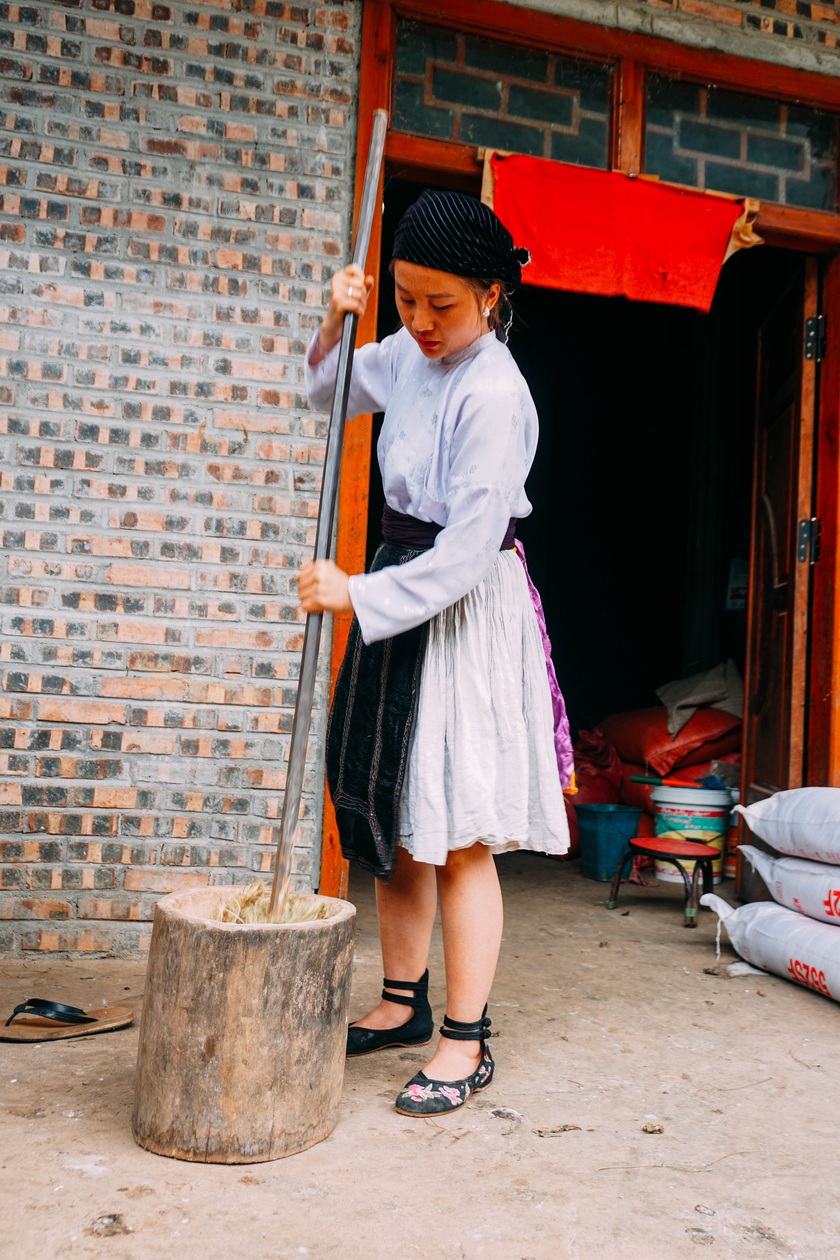
When a Mong person is three days old, he must have a roll of linen cloth to name himself. The roll of linen cloth will be kept in a coffin until he dies and will be taken to cover himself. If the roll of linen cloth is lost, a shaman must be called to perform a ceremony, but usually if it is lost, it is a bad omen, so the Mong people take great care of the roll of linen cloth. After the linen has been stripped, De uses his strength to pull the fibers from the flax plant. The flax plant will then be burned for firewood. The flax fibers are rolled up and put into a stone mortar to be pounded. Two rolls will be pounded at a time, taking two hours. Pounding the flax is extremely important, because it helps soften the fibers, and the subsequent process of joining the flax will also be easier.
After the thread is spliced, the Mong people will wet the thread with water, spin it to make it smaller, continue to soak it in water, spin the thread, and soak the thread in wood ash to create a white thread. Finally, they put the flax threads on the loom to weave. The Mong people weave whenever they have free time during the day, they diligently weave on the loom that their ancestors left them.


After being pounded and wetted, the traditional raw linen will have to be rolled using a type of stone taken from the Nho Que River.
Before the traditional raw linen was sold to the market, the Mong people in Thai Phin Tung had to use a type of stone taken from the Nho Que River to roll the fabric. They placed the fabric under a round log, then used another large stone to place on top of the fabric, and used their feet to roll the fabric to make the linen soft. With the effort of constantly learning science and technology, the linen fabrics of De village have been sold all over the world. Currently, the most important markets are the US and Japan.
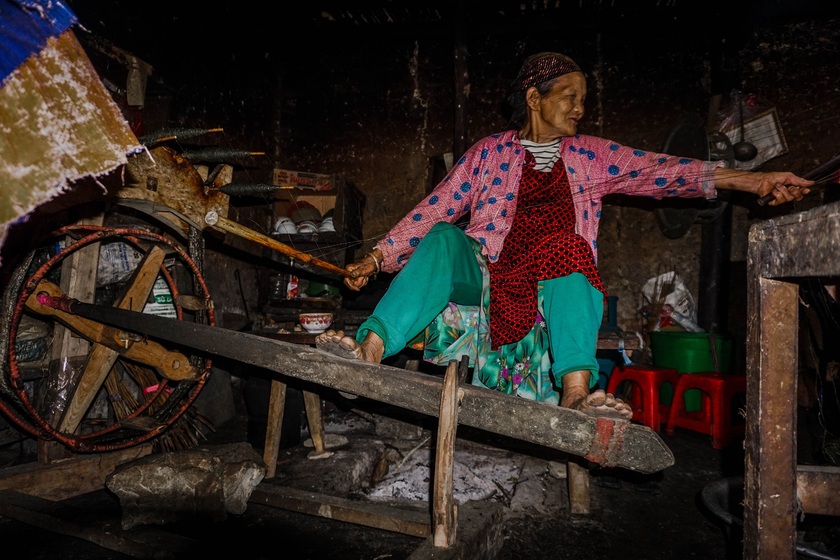
Along with self-training, De was sent by the Ha Giang Tourism Association to Yunnan, China to learn how to make traditional fabrics. He brought new linen making techniques and dyeing fabrics with new plants to the Mong people in the village. Contributing to increasing the production of fabric, bringing the village's products further.
It was noon, the meal was just ready. I was alone, but Cricket's parents had cooked a chicken to invite guests. Cricket smiled and said: "We Mong people are very hospitable, when someone from the lowlands comes up, we cook chicken to invite them." The smoke from the kitchen was still billowing, sitting down to eat felt so warm!
